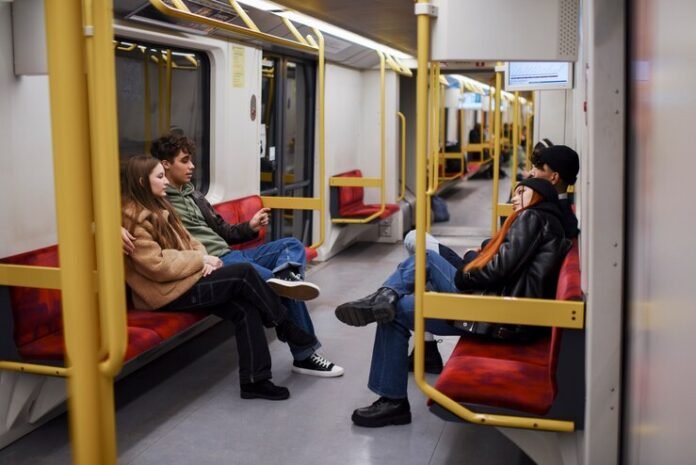Welcome aboard as we explore the world of public transport, a critical component of modern urban life. In cities across the globe, public transport systems are the arteries that keep the metropolitan body alive and moving. From buses to subways and trams, these networks provide essential services that not only facilitate daily commutes but also shape how cities grow and function. This post will take you on a comprehensive tour of public transport, covering its benefits, innovations, challenges, and future trends. Whether you’re an everyday commuter or a policy maker, this guide offers valuable insights into the evolving landscape of public transports.
Benefits of Public Transport
Saving Time and Money
Public transport offers significant savings on both time and money, making it an efficient choice for millions. Commuters can avoid the stress of traffic jams and the cost of parking when they hop on a bus or train. The predictable schedules mean less time spent on the road and more time to focus on what’s important. In terms of costs, public transport is often much cheaper than owning and maintaining a private vehicle. Monthly passes, student discounts, and senior citizen rates further add to the savings.
Environmental Impact
One of the most compelling reasons to choose public transport is its positive impact on the environment. By reducing the number of cars on the road, public transports lower the overall carbon footprint and decrease air pollution. Buses and trains emit fewer greenhouse gases per passenger compared to single-occupancy vehicles. Furthermore, many cities are investing in electric buses and hybrid trains, which significantly reduce emissions and promote a cleaner, greener environment.
Enhancing Urban Mobility
Public transport systems enhance urban mobility by providing reliable and accessible means of travel for all. They connect people to jobs, education, and healthcare, thus supporting economic growth and social inclusion. With public transport, cities can reduce traffic congestion and foster a more sustainable urban environment. For many, public transports are not just a convenience; they are a necessity that improves their quality of life.
Public Transport Innovations
Tech-Driven Solutions
In recent years, technology has transformed public transport systems around the world. Innovations such as mobile ticketing, real-time tracking apps, and contactless payments have made commuting more convenient and efficient. Passengers can now plan their journeys, check schedules, and purchase tickets using their smartphones. These advancements not only improve the commuter experience but also increase operational efficiency for transport authorities.
Green Initiatives in Public Transport
Sustainability is a growing priority for public transport systems. Green initiatives, such as the introduction of electric buses and solar-powered stations, are gaining traction as cities strive to reduce their carbon footprint. Additionally, many systems are incorporating energy-efficient technologies in their operations, such as regenerative braking in trains. These efforts not only contribute to a healthier planet but also lead to long-term cost savings for transport providers.
Integrated Transport Solutions
Public transport is becoming increasingly integrated with other modes of transport, offering seamless travel options for commuters. Bike-sharing programs, ride-hailing services, and park-and-ride facilities are being incorporated into transit networks to enhance accessibility and convenience. This integration encourages people to use public transports for part or all of their journeys, thereby reducing reliance on private vehicles and promoting sustainable travel habits.

Challenges and Solutions
Overcrowding and Capacity Issues
One of the biggest challenges facing public transport systems is overcrowding, particularly during peak hours. To address this issue, many cities are expanding their networks and increasing the frequency of services. Investment in larger-capacity vehicles and infrastructure improvements can also help alleviate congestion. Implementing policies that promote off-peak travel, such as fare discounts, can further optimize the use of public transports.
Funding and Maintenance
Securing adequate funding for public transport systems is a perennial challenge. Many networks struggle with budget constraints that affect maintenance and service quality. Innovative funding solutions, such as public-private partnerships and congestion pricing, are being explored to address these financial challenges. Additionally, adopting cost-effective maintenance strategies, such as predictive maintenance using data analytics, can help ensure reliable service while minimizing costs.
Safety and Security
Ensuring the safety and security of public transport users is a top priority. Transport authorities are implementing measures such as surveillance systems, increased staffing, and emergency response protocols to enhance passenger safety. Community engagement and education programs also play a crucial role in promoting safe behavior on public transports. Technology-driven solutions, such as automated monitoring and incident reporting, further bolster security efforts.
The Future of Public Transport
Smart Cities and Smart Transit
The future of public transport is closely linked to the development of smart cities. Smart transit systems, powered by the Internet of Things (IoT) and artificial intelligence (AI), are set to revolutionize urban mobility. These systems will provide real-time data on traffic patterns, passenger flows, and system performance, enabling more efficient and responsive operations. The integration of autonomous vehicles into public transport networks is also on the horizon, promising to further enhance the efficiency and safety of urban travel.
Personalized Travel Experiences
Advancements in technology are paving the way for personalized travel experiences in public transport. Data-driven insights will enable transport providers to tailor services to individual preferences, offering customized routes, schedules, and amenities. This personalization will not only improve passenger satisfaction but also attract more users to public transports, supporting sustainable urban mobility goals.
Resilient and Adaptive Systems
The future of public transport will be characterized by resilience and adaptability. With climate change and other disruptive events posing increasing challenges, transport systems must be designed to withstand and recover from unforeseen circumstances. Innovative solutions, such as modular infrastructure and flexible service models, will ensure that public transports continue to serve communities effectively, even in the face of adversity.
Conclusion
Public transport is more than just a means of getting from point A to point B; it’s a vital element of urban life that supports economic growth, environmental sustainability, and social inclusion. By understanding the benefits, innovations, challenges, and future trends in public transports, we can work towards creating systems that meet the needs of today and tomorrow. Whether you’re a commuter, a policy maker, or simply someone interested in the future of urban mobility, there’s much to learn and explore in the world of public transport. Let’s continue to support and advocate for robust, innovative, and sustainable public transport systems that benefit everyone



